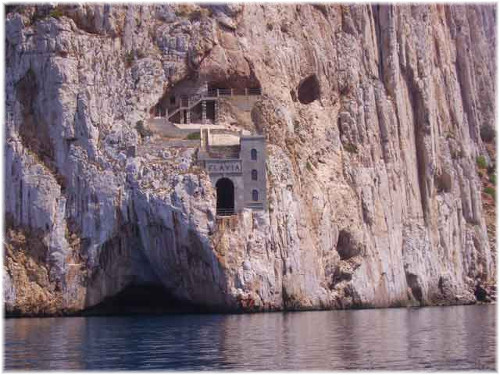


MINES
They are part of the Sardinian Geomineral Park, founded in 1989, the first in the world to be supported by Unesco. Nowadays they are misused (starting from the 1970s, production declined), but most of them are available for tourist and scholars to visit. Henry Gallery, located in Buggerru, southwestern coast of Sardinia, is magnificent and unique in its kind. Through its small tunnels and passageways carved in solid rock it is possible to admire unforgettable sights along the coast and sheer drop over the blue sea. In 1892 it was enabled the use of a steam powered locomotive on a futurist rail network: the train is still available for tourists, for a wonderful journey exploring the bowels of the earth, and the beauty of the cliff and the sea just under you. The tunnel worths a visit, the place is really fascinating, especially for children and families, but it is better to call for information and reservations +390781491300 Porto Flavia is a sea harbor located near Nebida, an engineering masterpiece constructed in 1924 by Cesare Vecelli, in the Masua hub, a region rich in coal, sulphur, zinc, lead, silver and barium. It is named after Flavia Vecelli, the daughter of the engineer Vecelli. To resolve the problem of loading the ships, improving loading time and cost, he invented a direct loading system of the minerals on the steamships coming from Carloforte, directly from the cliff. The tunnel ends with a sheer drop over the sea: it is a stunning view from the sea. The harbor's characteristics make it unique in the world, and at that time it was an oustanding engineering feat. And more, it is just in front of the Pan di Zucchero stack, a breathtaking view. Santa Barbara Cove and San Giovanni Mine, located near Gonnesa: the mine is one of the oldest and most important of Sardinia, which was known at the time of the Republic of Pisa. The miners gladly guide you in their elevator almost 500 meters down into the mountain, through hot and humid galleries up at 200 mt. above sea level, to the cool fresh Santa Barbara Cave, a really lovely and interesting place. The geodic cave is without natural opening: it was discovered during excavation for the mine in 1952. Now it is open to the public, and it is a "unicum": you will find large barium sulfate and calcium carbonate crystals forming stalagmites and stalactites, and the cave is still filled with water. There you can get some gorgeous pictures. Great mine of Serbariu, Coal Museum, Italian Centre for Coal Culture, located in Carbonia. It is possible to visit the main structures of the coal mine, the largest mine in Italy, once an important source of energy for the country: underground tunnel, winches room and lamp room. It occupied 33 hectares on the surface, 100 km of underground chambers, and 16.000 miners. It opened in 1937 and has worked until 1964. The Museum enables visitors to understand the typical hard-working day of miners and to follow all the transformation process of coal into energy. It shows the tools used by miners and concentrates on the social history of mining. Within the pavilion you will find also the Museum of Palaeontology and Natural Sciences.
|
 Mining and the processing of minerals date back to ancient times in Sardinia: probably it started around the 6th millennium BC since Neolithic era and Nuragic civilization. Romans, Phoenicians and Carthaginians deeply exploited the really astonishing underground richness (silver, iron sulphide, lead and copper, and, in more recent times, zinc), above all in the Iglesiente. In the Iglesiente area there is most important Italian mining compound, including some of the most significant and extensive mines of the past centuries in Italy: they represent industrial archaeology, history, architecture, scientific progress and social revolution. In modern times, thanks to the interest toward the extractive industry in the Sulcis Iglesiente area, the construction of roads, railways and dams was launched for the development of this part of Sardinia. During the last 150 years the Sardinia region created a huge human, historical and cultural heritage, strictly bound to mines.
Mining and the processing of minerals date back to ancient times in Sardinia: probably it started around the 6th millennium BC since Neolithic era and Nuragic civilization. Romans, Phoenicians and Carthaginians deeply exploited the really astonishing underground richness (silver, iron sulphide, lead and copper, and, in more recent times, zinc), above all in the Iglesiente. In the Iglesiente area there is most important Italian mining compound, including some of the most significant and extensive mines of the past centuries in Italy: they represent industrial archaeology, history, architecture, scientific progress and social revolution. In modern times, thanks to the interest toward the extractive industry in the Sulcis Iglesiente area, the construction of roads, railways and dams was launched for the development of this part of Sardinia. During the last 150 years the Sardinia region created a huge human, historical and cultural heritage, strictly bound to mines. 